This post may contain affiliate links. Please read our disclosure policy.
How to make powdered milk at home from fresh milk – using just a large saucepan and fresh milk.
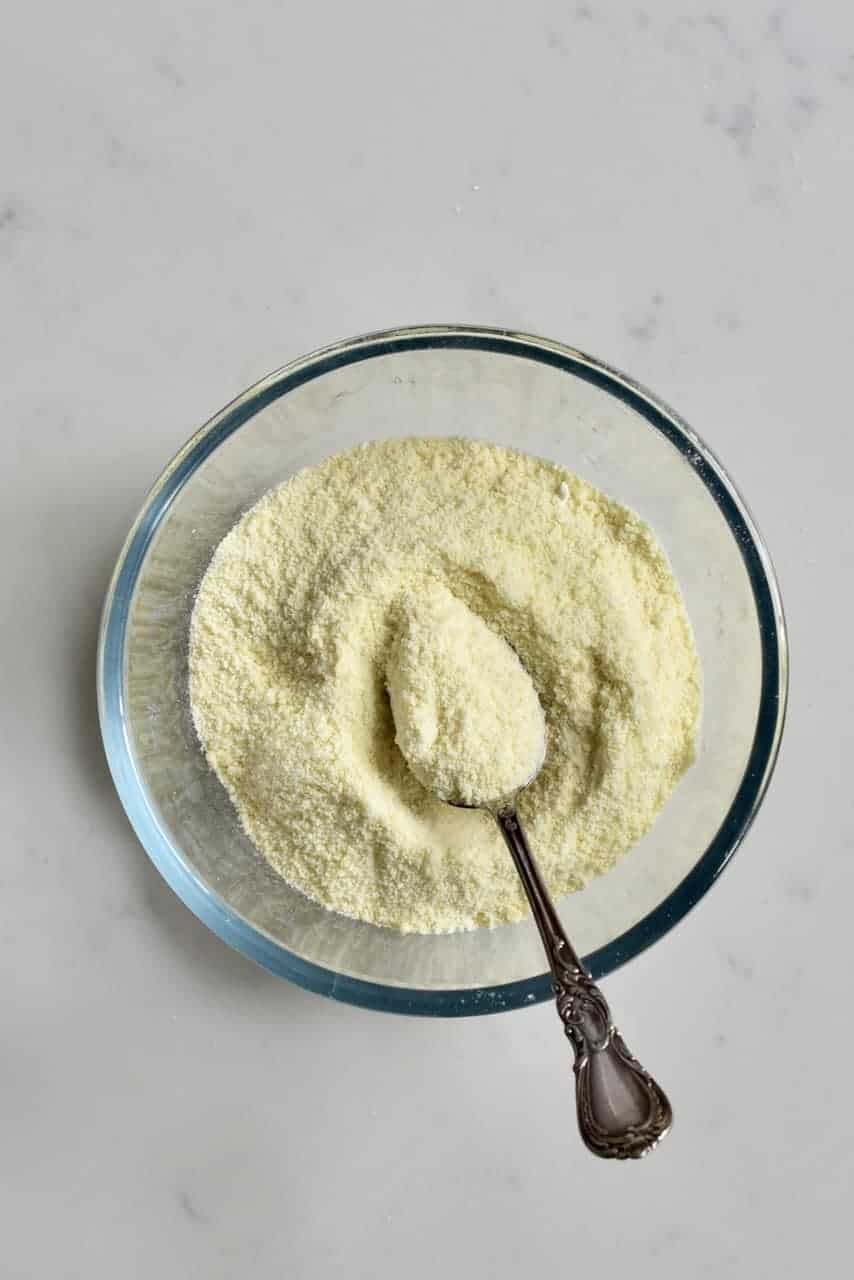
Making homemade powdered milk is not only a simple process, but it can also extend the life of milk nearing its use-by date by months (if not years), as well as keep your dairy supply going for longer. So if you find yourself in the situation where you have lots of milk and no way to possibly use it before it sours, then making milk powder can be a great way to reduce waste and prolong your dairy.
I recently did this DIY for homemade Coconut Condensed Milk and was curious about what would happen if I just continued to leave milk on the heat after it’s reached ‘condensed’ levels – the answer is a thick milk paste that can be turned into milk powder.
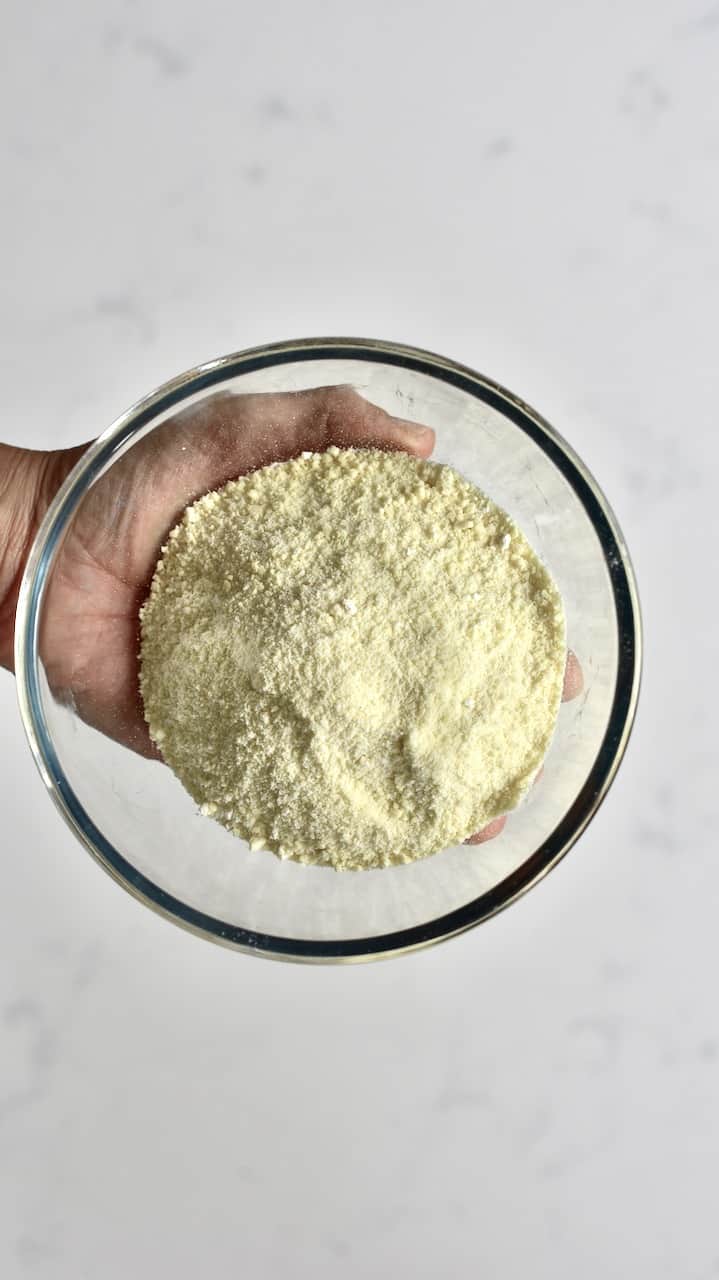
I don’t drink a lot of dairy milk, however, for the times that I do – I will sometimes struggle to finish the entire bottle of store-bought milk within the short shelf-life. By making your own powdered milk, you can reduce waste, use the milk at a later date and keep it on hand for emergencies in long-term storage.
Now, I know that in the interest of being completely honest, milk powder doesn’t taste as good as fresh regular milk. I don’t think many people expect it to be, to be honest. However, there are some tips to also combat that worry too, which I’ve included below!
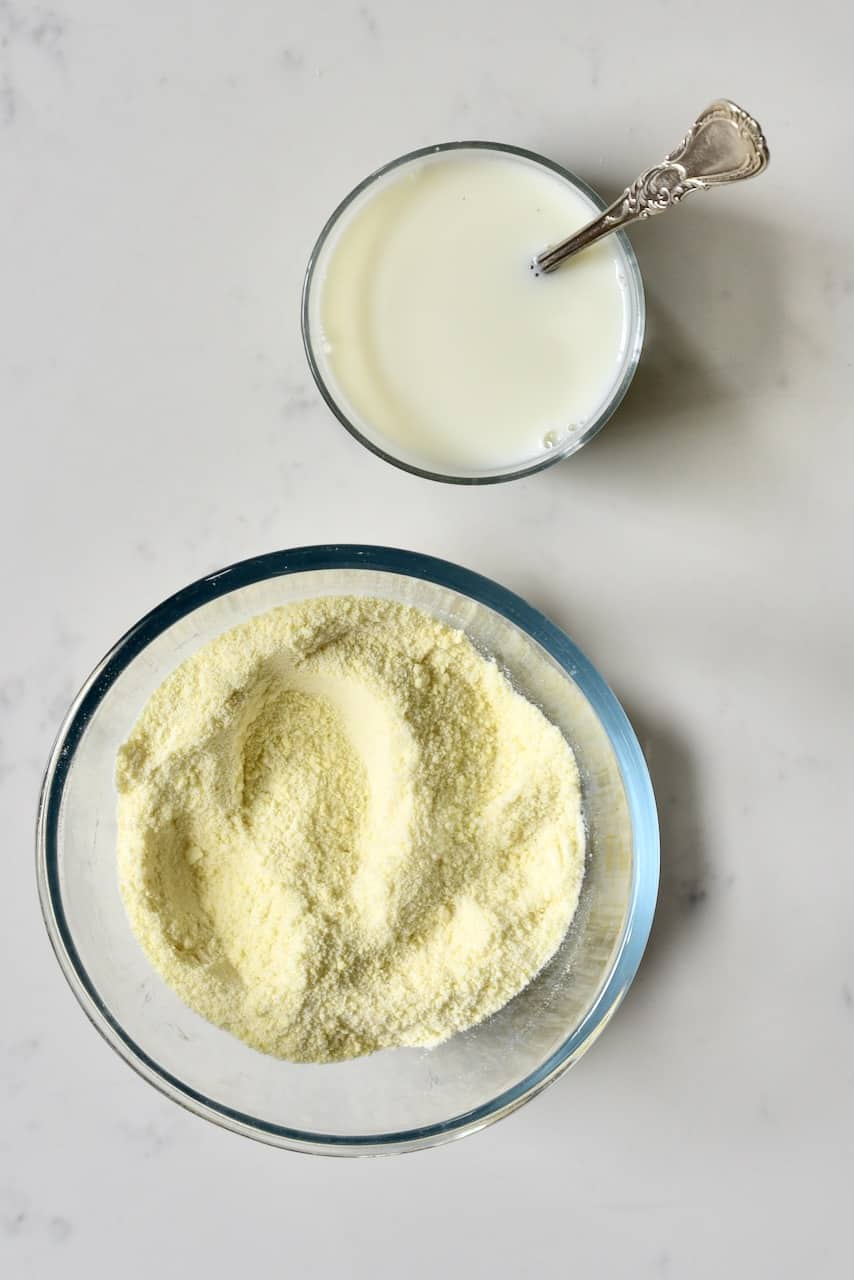
Want to save this recipe?
What is milk powder?
Perhaps not surprisingly, powdered milk is exactly what it sounds like. Milk that has been turned into a dried milk powder through an evaporation process. This is done by removing all of the liquid from the milk until just solids remain – which can be made into a powder.
There are multiple types of milk power products you can get – including whole milk (full fat) and skimmed. You can also get a number of other powdered dairy products such as whey and buttermilk.
As I’ve said above, this is done to preserve it and reduce bulk. Plus, milk powder doesn’t even need to be refrigerated.
Plus, perhaps the most interesting thing that I have found out – making homemade milk powder doesn’t deplete the nutrition of the milk. Through the slow process of heating, the minerals and vitamins remain intact. In fact, the only thing you do lose is water content and extra moisture.
Plus, this natural product requires no additional preservatives, so can be kept chemical-free.
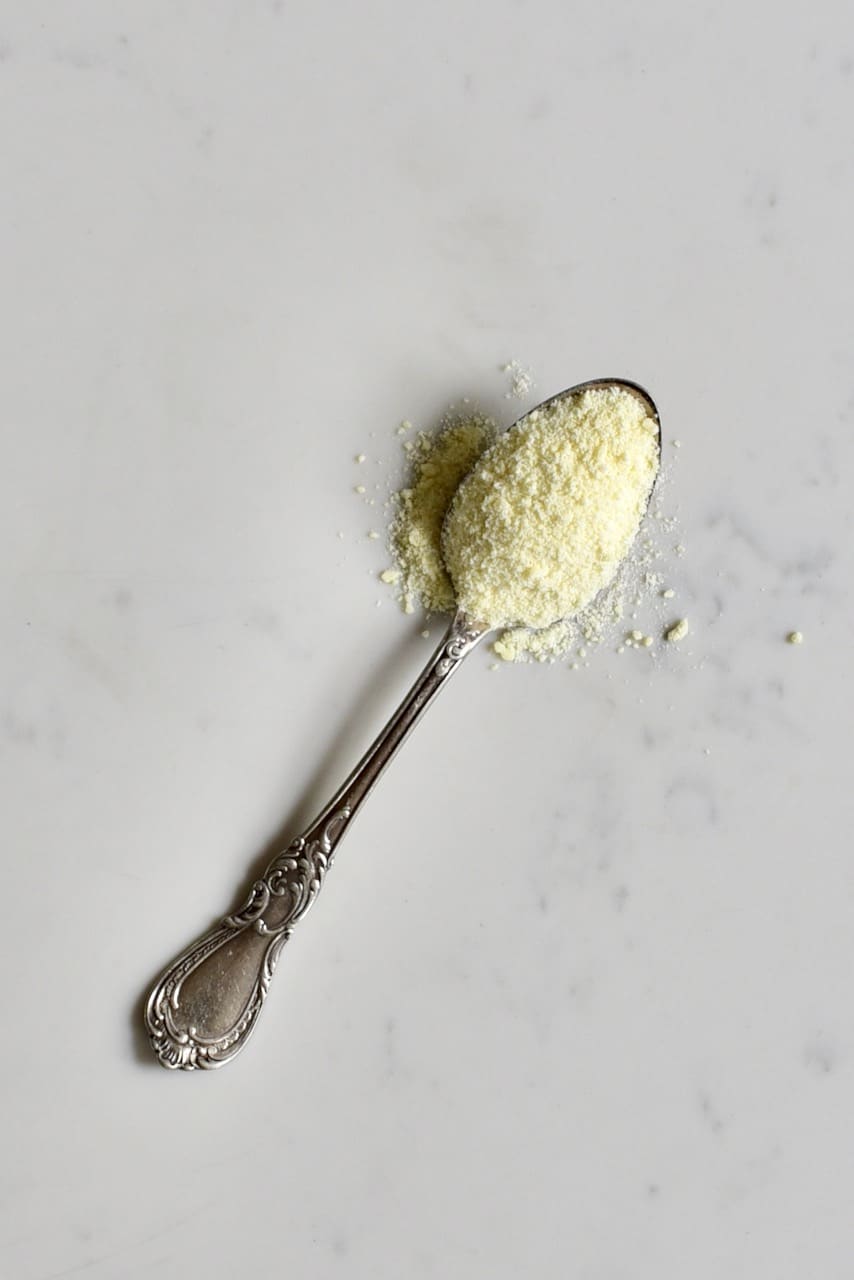
A few Notes on making homemade powdered milk
- While any milk can be used for drying (skim milk, full fat, etc.), it should always be a pasteurized milk, due to the reduced bacteria content. So I wouldn’t suggest using raw milk.
- Skimmed milk will generally have a longer shelf life, due to the lower fat content.
- There are multiple methods for making milk powder at home. The two easiest methods include using a dehydrator and the method I use below. I’ll include a note in the recipe card below about the dehydrator method.
- The key to this DIY is making sure all of the moisture is completely removed – to stop mould from being able to grow (as it needs moisture). On top of that, make sure the container you store it in is also completely dry and airtight. Some people actually vacuum seal it, to further extend the shelf life.
How to Reconstitute the Milk Powder
Since this is a DIY I previously didn’t know too much about, I’m no expert in the art of reconstituting milk powder. With that in mind, I decided to turn to supermarket versions, to see what they suggest.
And that is where confusion sets it. In the end, after LOTS of research, I discovered three main methods:
– 1:2 ratio of milk powder to cold water
– 3 tBsp of milk powder to one cup of water
– and 1 tBsp of powdered milk per one cup of water
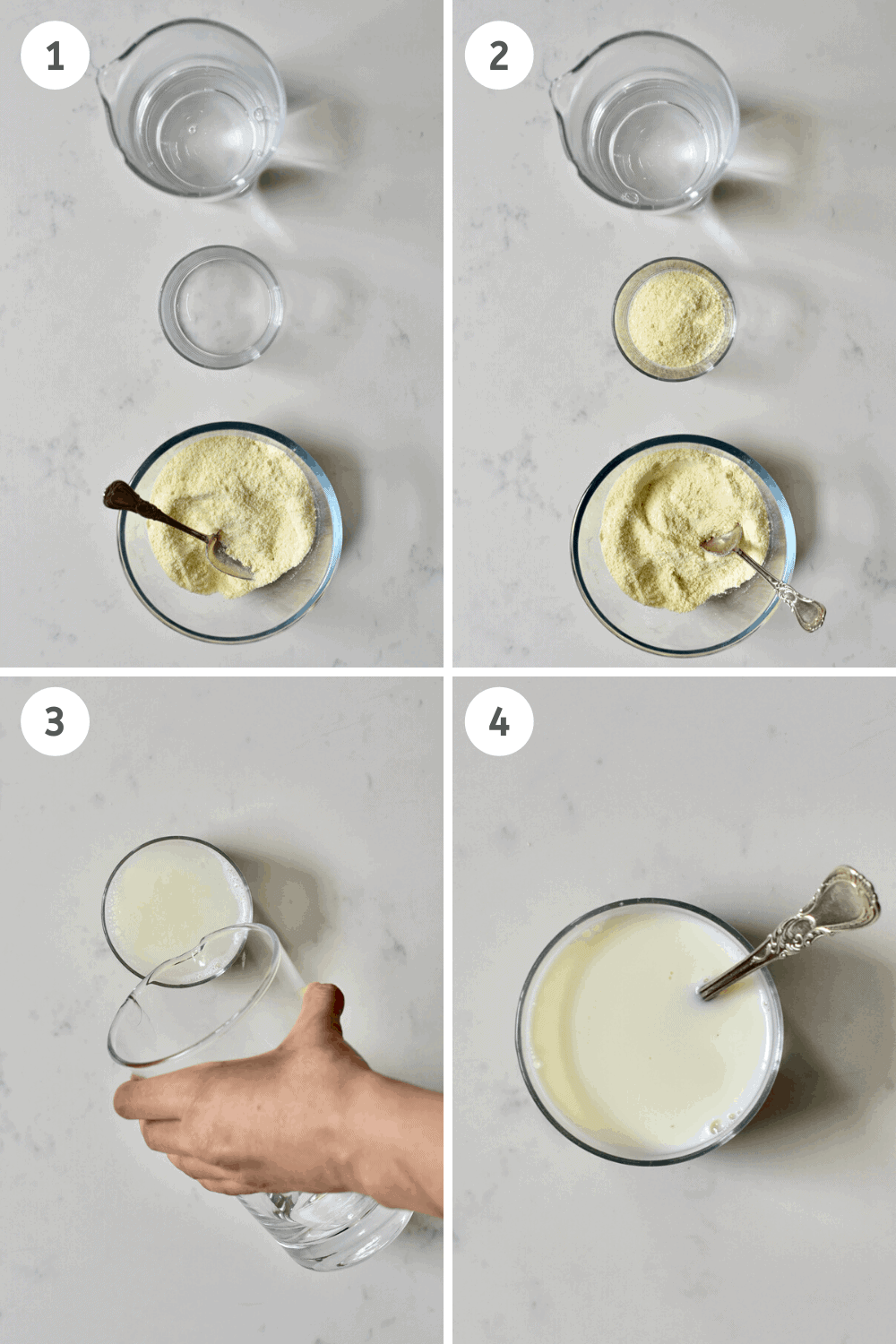
With the whole idea of this DIY being to make a product last longer, I decided to go with 1 tBsp of powder per glass of water and then increase the amount if needed, but I found that I didn’t have to. I’d say that you should do the same – start with 1 tBsp and increase, if needed.
I have learned a few tips on making the most of your reconstituted milk too. For example:
- You can add a little bit of homemade vanilla extract into the milk – it’s delicious! Although obviously best for if you’re dedicating that ‘batch’ to sweet purposes.
- For a super ‘cheat’ at making your milk taste better, you can actually mix it in with a 1:1 ratio with milk you already have in your fridge. If the milk from the fridge was full fat then your resulting mixture will be equivalent to 2%. However, this helps your milk go further while also keeping it tasting creamy and rich.
How to make milk powder
Homemade Powdered Milk is very easy to make. In fact, there are a few different methods to make the milk powder including on a hob, in a dehydrator tray, and my preferred method – in the oven.
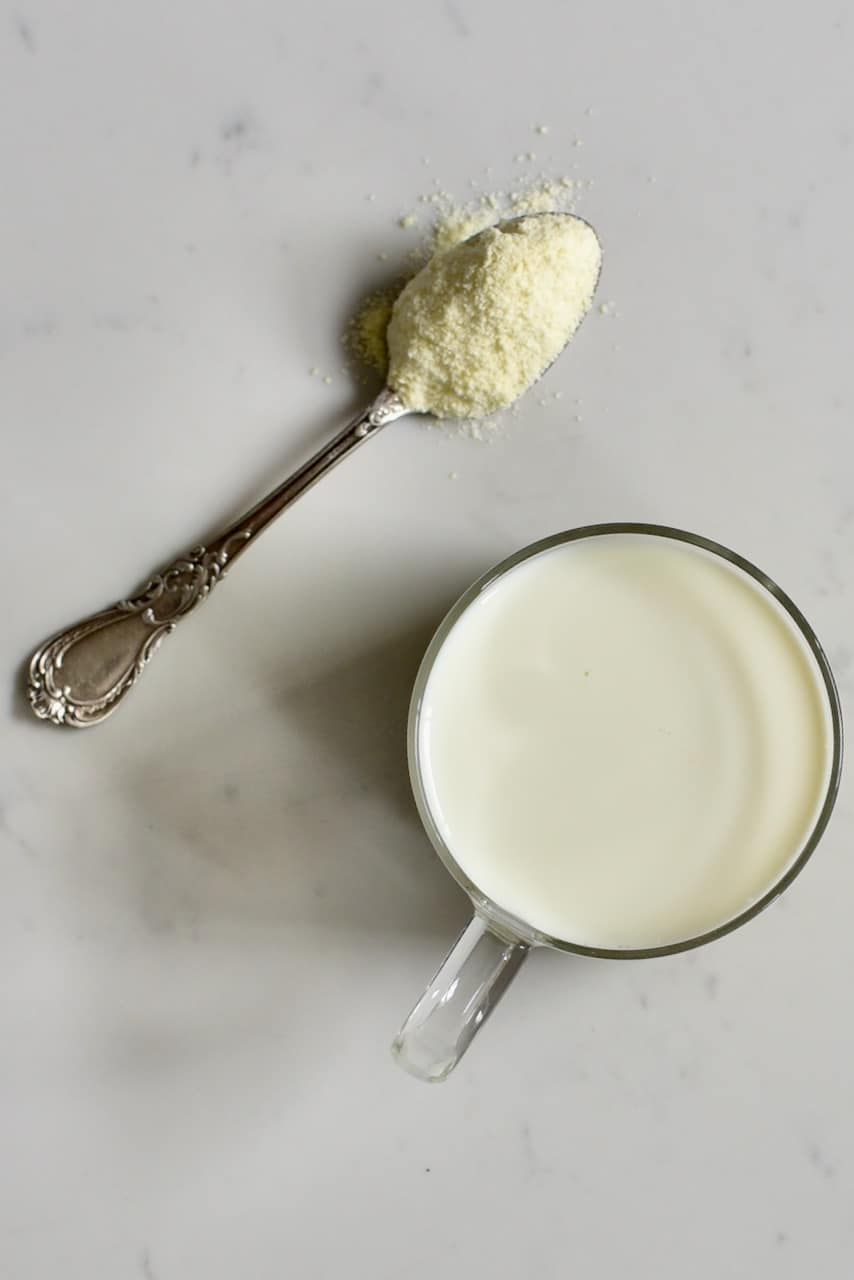
Needed
1 liter full-fat fresh milk yields about 150g of powdered milk.
You’ll also need a variety of oven-safe dishes. The larger the surface area then the faster the water will evaporate from the milk
Steps
Pour room temperature milk into a big oven-safe dish. It’s best to keep the milk at shallow levels, to dry out quickly. I tend to keep it at a maximum of an inch.
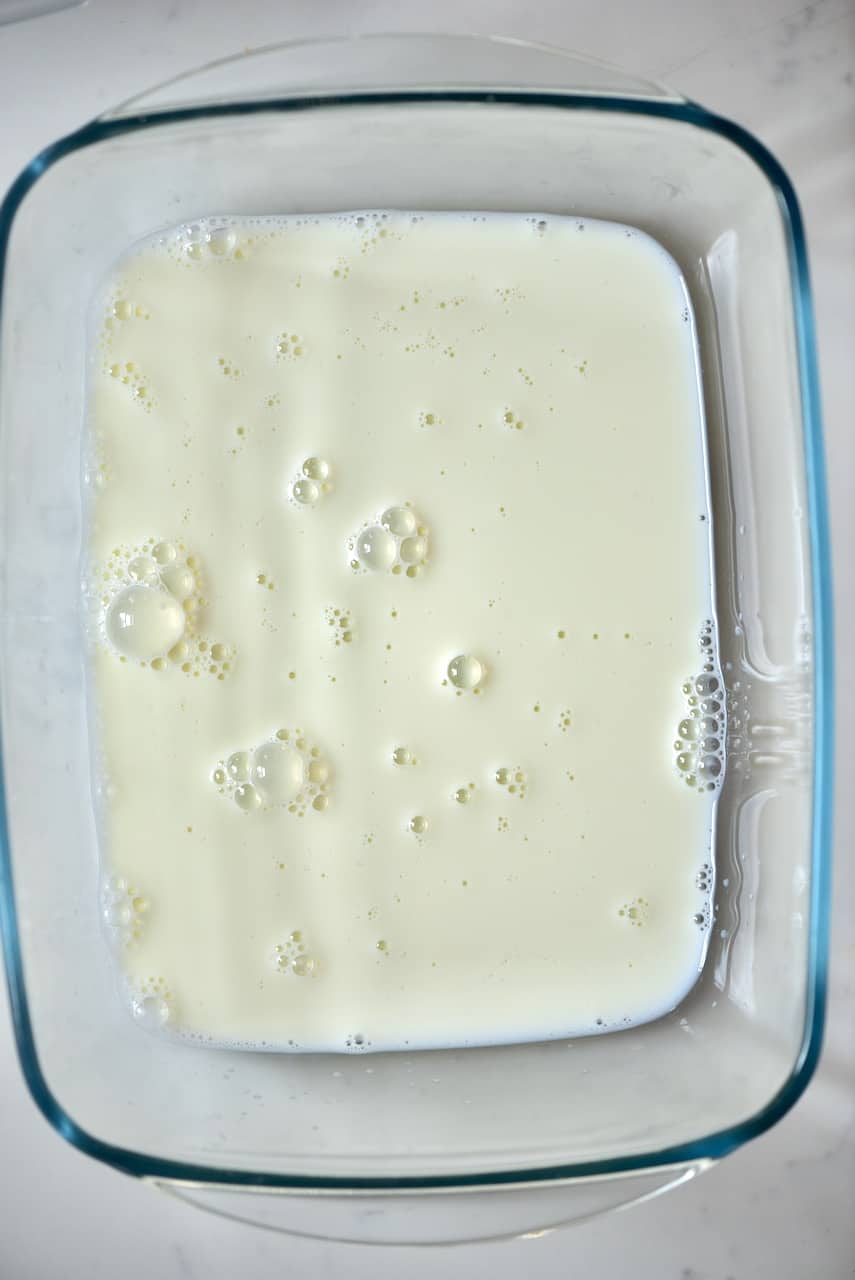
Depending on the size of your oven and/or dish, you can pour the milk into several dishes.
Note* If you want to use a dehydrator then you follow a similar method, pouring milk onto the dehydrator trays (or place a large dish in the dehydrator) and dehydrate at very low temperature over a long period of time. I found good results at 57ºC for around 8 hours, stirring occasionally. However, it can take up to 12 hours depending on how much milk you pour on each tray.
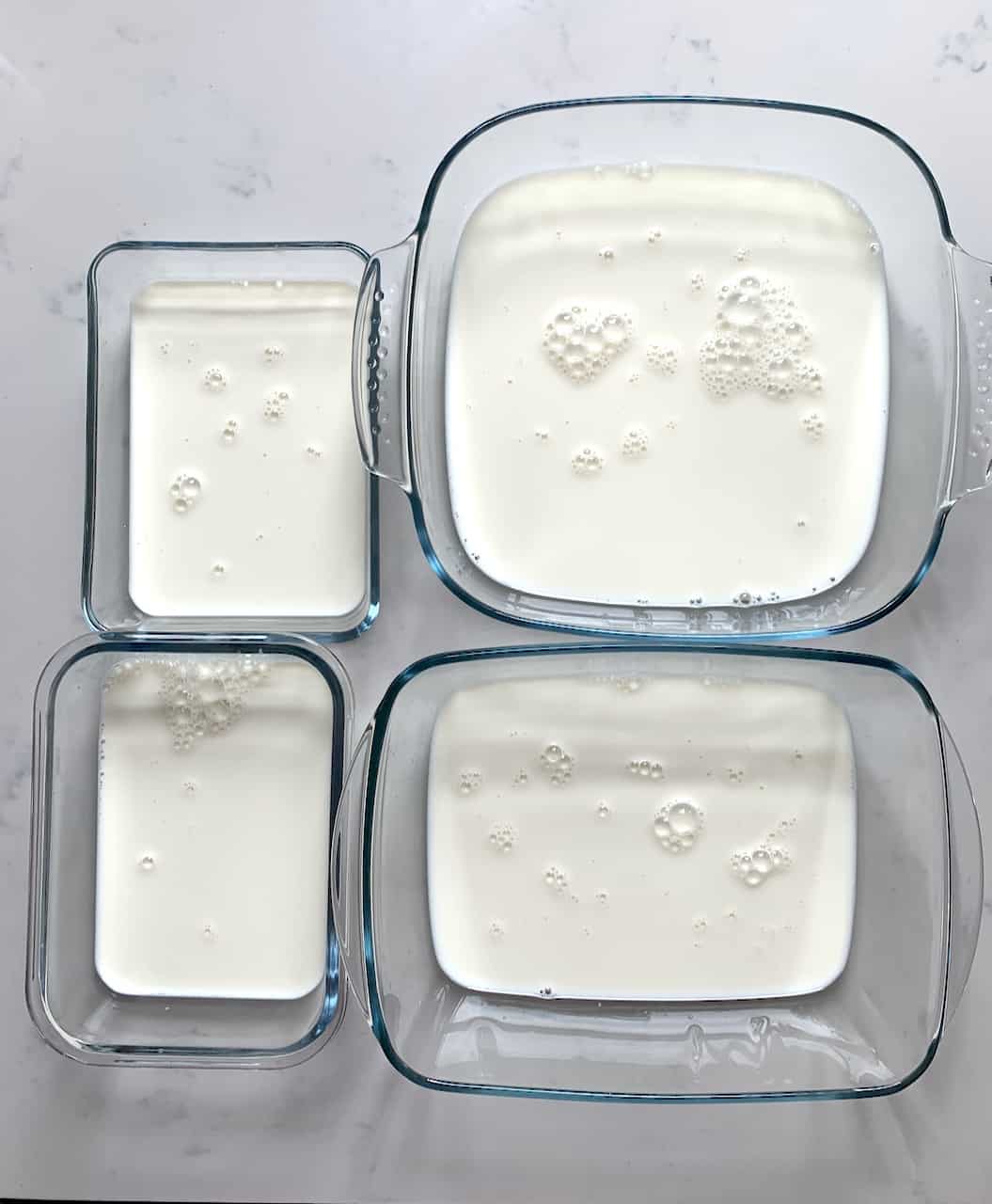
Next, place the dishes into your oven at its lowest temperature. If it can go as low as 50-60ºC, then that’s ideal. Otherwise, select the lowest temperature that you can, using the fan-assisted option.
If you don’t have a fan option then leave the oven cracked open slightly, to let the evaporating liquid out so the milk dries quicker.
As the water evaporates, the milk will become pastier and pastier until finally, it becomes a thick paste. Make sure the milk paste doesn’t turn brown while drying – that’s a sign that the temperature is too high.
Stir from time to time – this allows the water to evaporate evenly, especially when the milk starts turning to a paste.
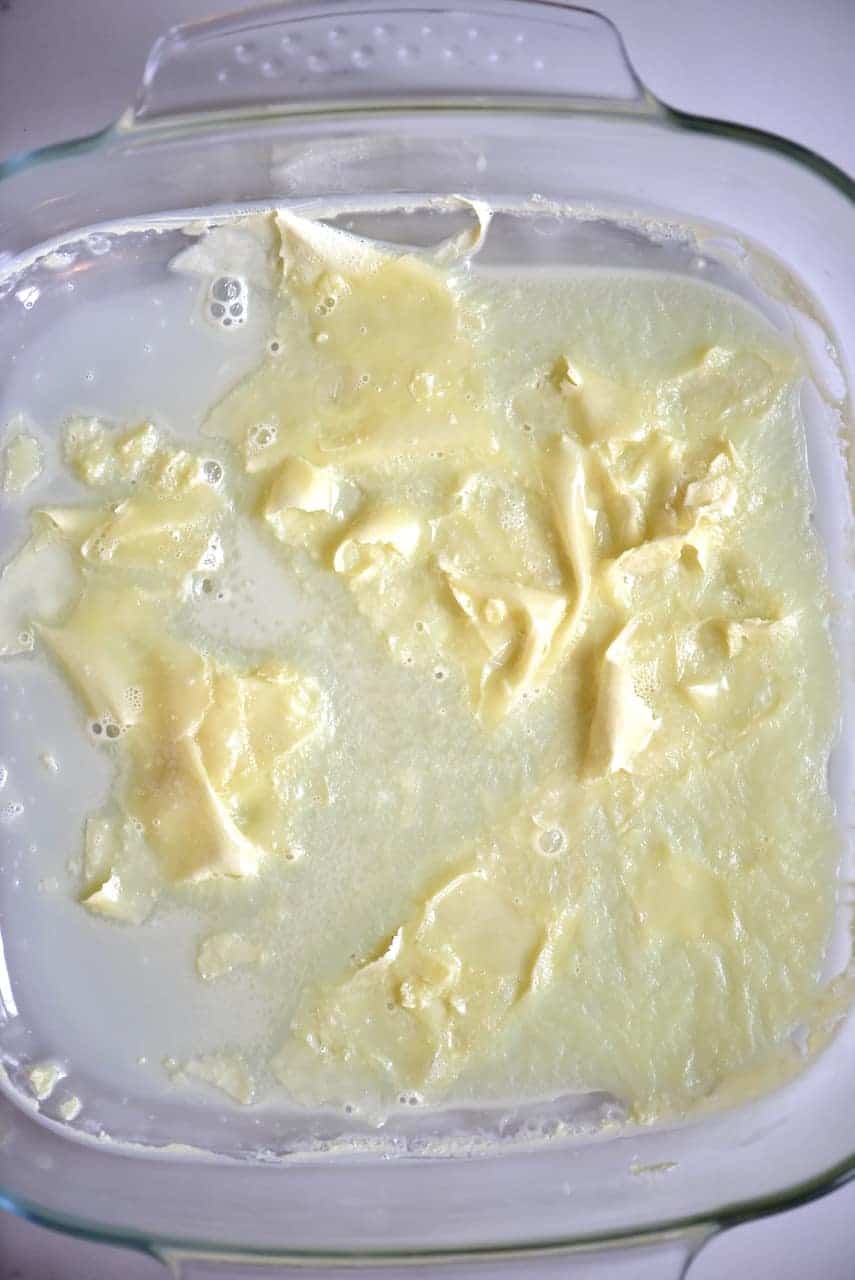
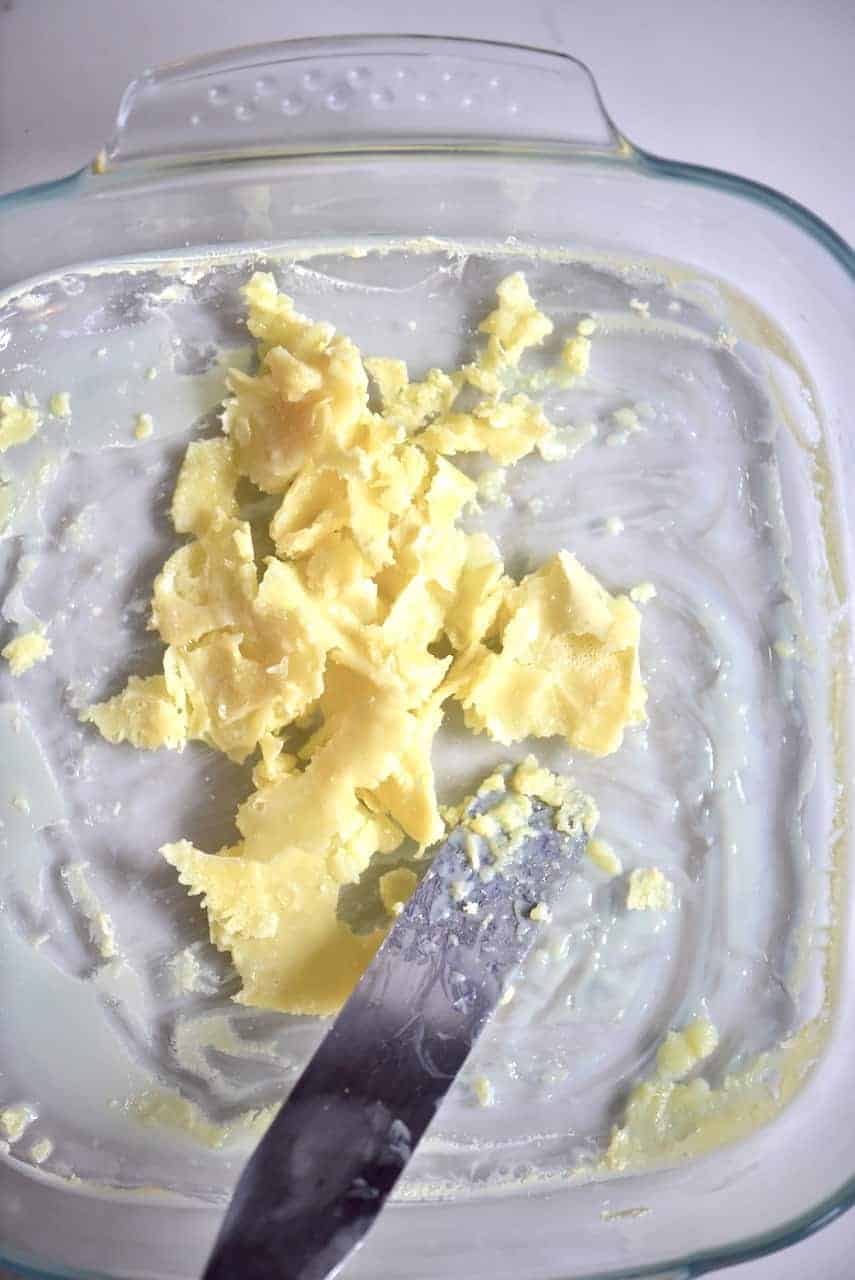
Note: If you stop in the middle of the process, you get condensed milk.
Once you get the milk paste, spread it out on a tray or over parchment paper and return to the oven or dehydrator to finish drying the milk.
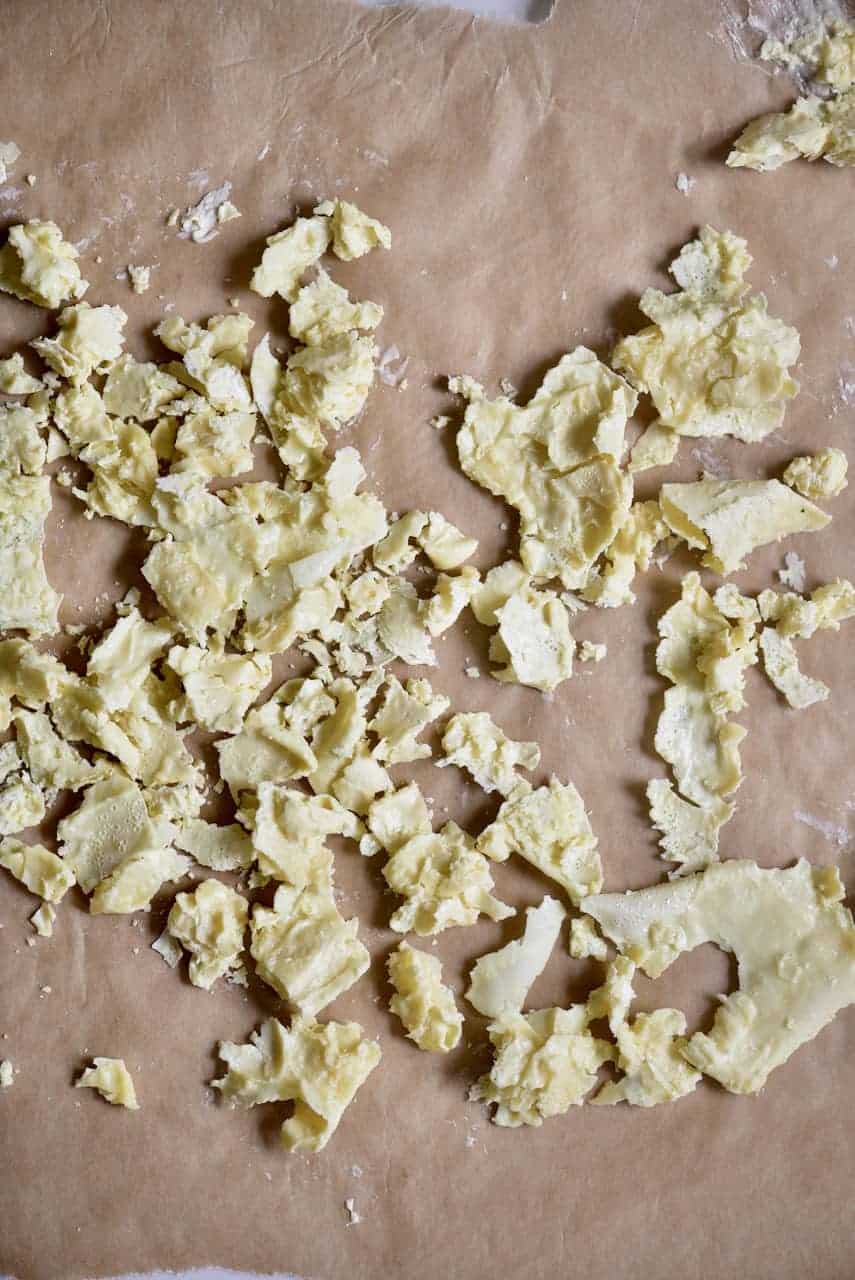
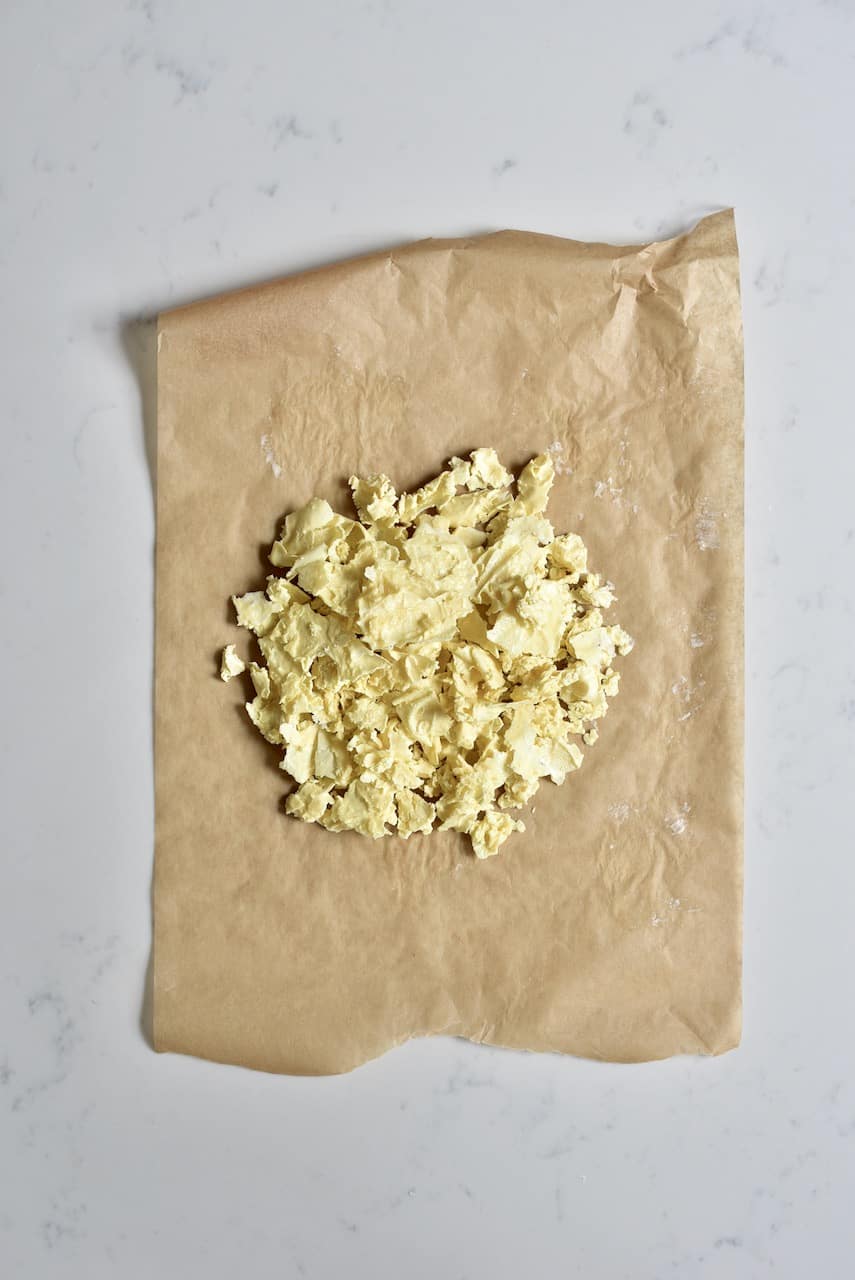
Once the paste is completely dry, you will be able to easily remove it from the tray/baking sheet. At this point, it will be easily swappable, with no bend.
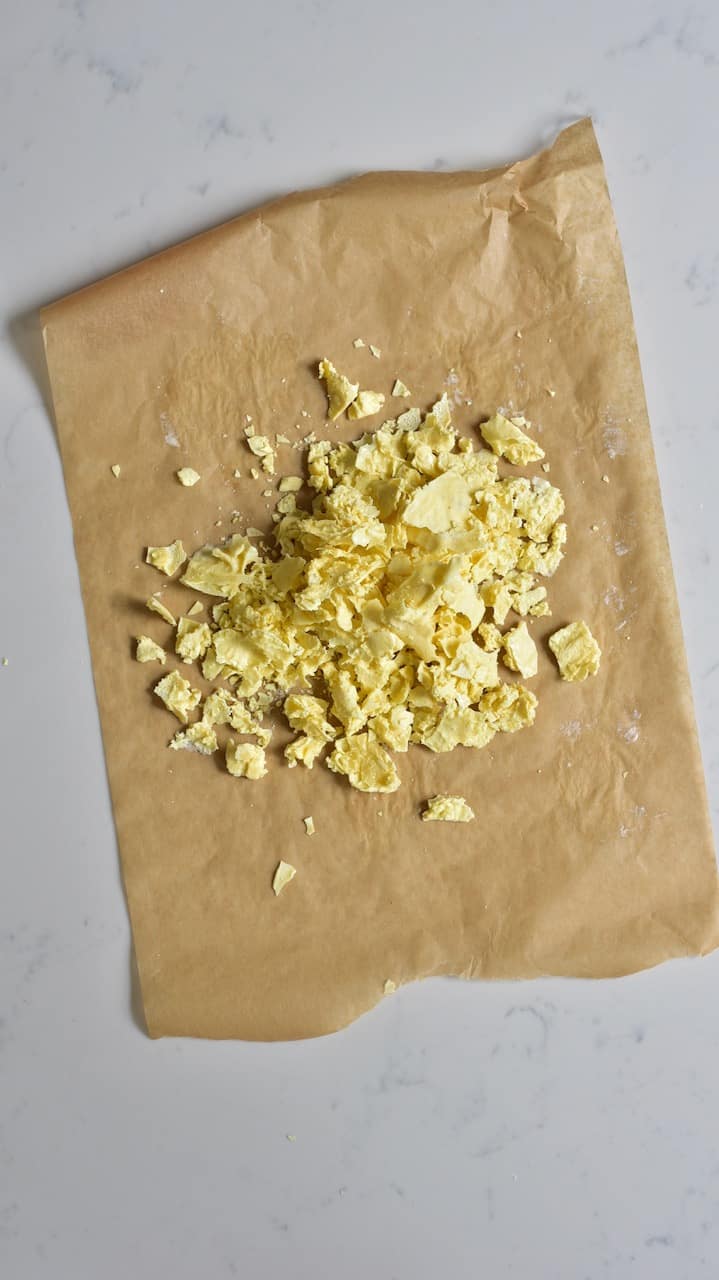
Grind the flakes into powder in a spice grinder or blender.
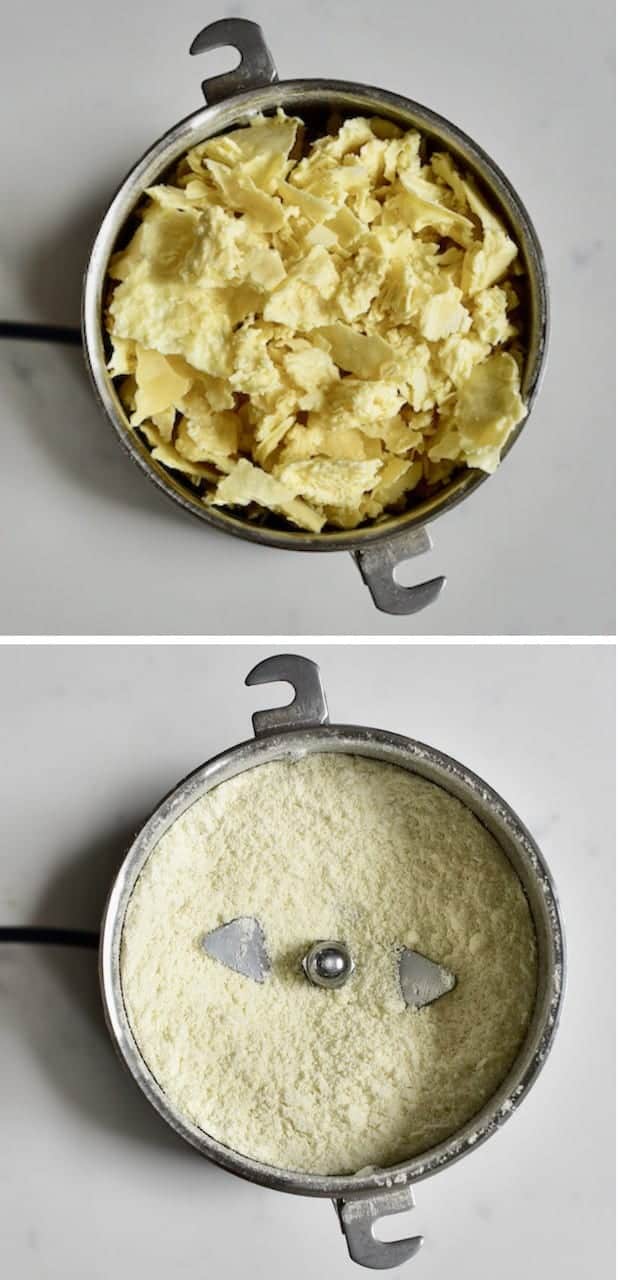
Pass the dehydrated milk powder through a fine-mesh sieve. Then grind the bigger pieces again- that way you’ll achieve a very fine powder.

Store the powdered milk in an airtight container. Make sure there is no moisture in it at all and keep stored in a cool, dark place. Milk powder can be kept for months, if not years this way.
If you have any questions, leave a comment below. Also, I love seeing your recreations so feel free to tag me on Instagram @AlphaFoodie.
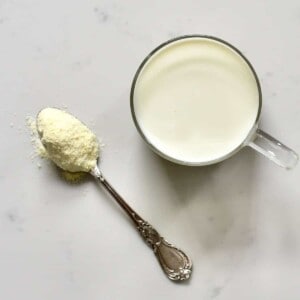
How To Make Powdered Milk At Home
Ingredients
- 1 L milk skimmed or full fat/whole milk will work
Instructions
- Pour room temperature milk into a big oven-safe dish. It's best to keep the milk at shallow levels, to dry out quickly. I tend to keep it at a maximum of an inch.
- Depending on the size of your oven and/or dish, you can pour the milk into several dishes. *
- Next, place the dishes into your oven at its lowest temperature. If it can go as low as 120-140ºF/50-60ºC, then that's ideal. Otherwise, select the lowest temperature that you can, using the fan-assisted option.
- If you don't have a fan option then leave the oven cracked open slightly, to let the evaporating liquid out so the milk dries quicker.
- As the water evaporates, the milk will become pastier and pastier until finally, it becomes a thick paste. Make sure the milk paste doesn’t turn brown while drying – that’s a sign that the temperature is too high.
- Stir from time to time – this allows the water to evaporate evenly, especially when the milk starts turning to a paste. **
- Once you get the milk paste, spread it out on a tray or over parchment paper and return to the oven or dehydrator to finish drying the milk.
- Once the paste is completely dry, you will be able to easily remove it from the tray/baking sheet. At this point, it will be easily snappable, with no bend.
- Grind the flakes into powder in a spice grinder or blender then pass the dehydrated milk powder through a fine-mesh sieve. Then grind the bigger pieces again- that way you’ll achieve a very fine powder.
- Store the powdered milk in an airtight container. Make sure there is no moisture in it at all and keep stored in a cool, dark place. Milk powder can be kept for months, if not years this way.
Video
Notes
Nutrition
Nutrition information is automatically calculated, so should only be used as an approximation.










I was wondering if you can turn other liquids into powder using the same process?
Hi John,
This method could work for other liquids too. How long it take to dehydate would depend on exactly what you are using.
Can evaporated (canned) milk work for this as well?
Hi Courtney,
I haven’t tried this yet but, since evaporated milk is just milk with some of its water removed, it makes sense that by dehydrating it further, we’d get powdered milk. I hope this helps.
Would Evaporated (canned) Milk work okay as well?
Hi Shannon,
I haven’t tried this yet but, since evaporated milk is just milk with some of its water removed, it makes sense that by dehydrating it further, we’d get powdered milk. I hope this helps.
Hi,
Is it possible to do this using Vanilla Almond Milk?
Hi Shira,
Although the same method will work to make almond milk powder, I recommend using homemade almond milk (which you can flavor as you’d like) and not commercially made almond milk which usually has a very small percentage of almonds and a bunch of other additives.
Kindly guide me on how to make coconut milk powder
Hi Bidex,
The recipe for how to make coconut milk powder is coming soon. Please stay tuned! 🙂
Will this recipe work with almond milk ?
Hi Tutti,
Yes, the same method will work with almond milk.
Hello!
I would like to ask (if you know) if i also could use this method if it comes to making breastfeeding jewelry with epoxy?
Greetings from thijn 🙂
Hi Thijn,
I’ve never tried this so I am not sure if this method will work. Good luck with the jewelry project.
Hello
Thank you for the recipe there is surprisingly little literature on this topic online! I’m interested in making heavy cream powder and Buttermilk powder; would this work do you think? Sorry for the repetitive questions if someone has asked this.
I’m also curious about making butter powder and sour cream powder as well, s I see one can purchase these online. Unfortunately, i cannot find a Canadian company and therefore I would be purchasing from Amazon and at a huge mark up as its American dairy. I did find a couple of these things at BulkBarn online, but they’re pricey and also BulkBarn is so far away!
So I guess I’m wondering about dehydrating- heavy cream, Buttermilk, butter and sour cream. Thanks kindly
(Also I’m not too concerned about the ability after to reconstitute these powders, more as a way to add flavor and richness, and to make low carb/keto items; for example keto white chocolate, keto dry buttermilk pancake mix for the survival kit etc)
Thanks so much!
Hey Tara! You’re right—there’s surprisingly little info on making powdered dairy products at home! While powdering milk is possible, high-fat dairy products like heavy cream, buttermilk, sour cream, and butter are much harder to dehydrate at home due to their fat content.
For buttermilk powder, you could try dehydrating it like milk, but the higher fat content means it takes longer and must be stored carefully. Heavy cream and sour cream powders are difficult to make at home because fat doesn’t dry the same way as milk solids—commercial versions use spray drying or stabilizers. Butter powder isn’t something you can make at home with simple dehydration, as it’s nearly pure fat and requires a carrier like maltodextrin to turn into a powder.
If you’re looking for a way to add richness to keto-friendly mixes, you might have better luck freezing these ingredients in small portions rather than drying them. If I find a reliable home method for these, I’d love to update the post with more details! Hope that helps.
Hello, I will try to dehydrate raw milk too, as the temp used is close to that needed for pasteurization (63c). I think it would be viable. I want to try it with goat milk.
Hi Peggy,
You can try dehydrating goat milk – it will be the same procedure. Keep the temp low (about 50-60ºC) and dehydrate for 8-12 hours. Hope this helps. 🙂
Roughly how long did this take in your oven? I’m trying to decide when to do this with my buttermilk, but time is a factor 🙂
Hi Cydne,
It took about 10 hours at 50ºC. The time will vary a bit depending on how much milk you add in the bowl (ideally, it should be very shallow) and the temperature of your oven (or dehydrator). In any case, it is a slow process. I hope this helps.
Really cool recipe! I was wondering if it is possible to use this method with other liquid dairy products as well? (Such as heavy cream or buttermilk)
I’m not sure how exactly the processes would differ but I know that powdered buttermilk is a thing, Cream should work in a similar way to this milk method – although I’ve never tried. If you do, let me know how it goes 🙂
Will this work with plant based milk?
Hi Sonya,
Yes, normally the same process will work with plant-based milk.
Hi! May I know how many grams you produced in 1L of milk? I am planning to try this
Hi Krysthel,
1L of milk yielded about 150 grams of powder. I hope this helps.
Hello! Thanks for sharing!
Is it possible to make this with plant milk?
Hi Juli, you’re very welcome. Yes with few differences. Will be publishing the coconut milk powder very soon, stay tuned!
I was just wondering where can i find the coconut plant milk powder recipe. I loved this by the way and Thankyou.
Hi Ashley,
Still working on the coconut milk powder recipe – stay tuned, it will be posted soon.
anxiously waiting for coconut milk powder
I am sorry it’s been a while, I will be posting it this month I hope! Hope you’re well 🙂
Hello
Hi Ayuba 🙂